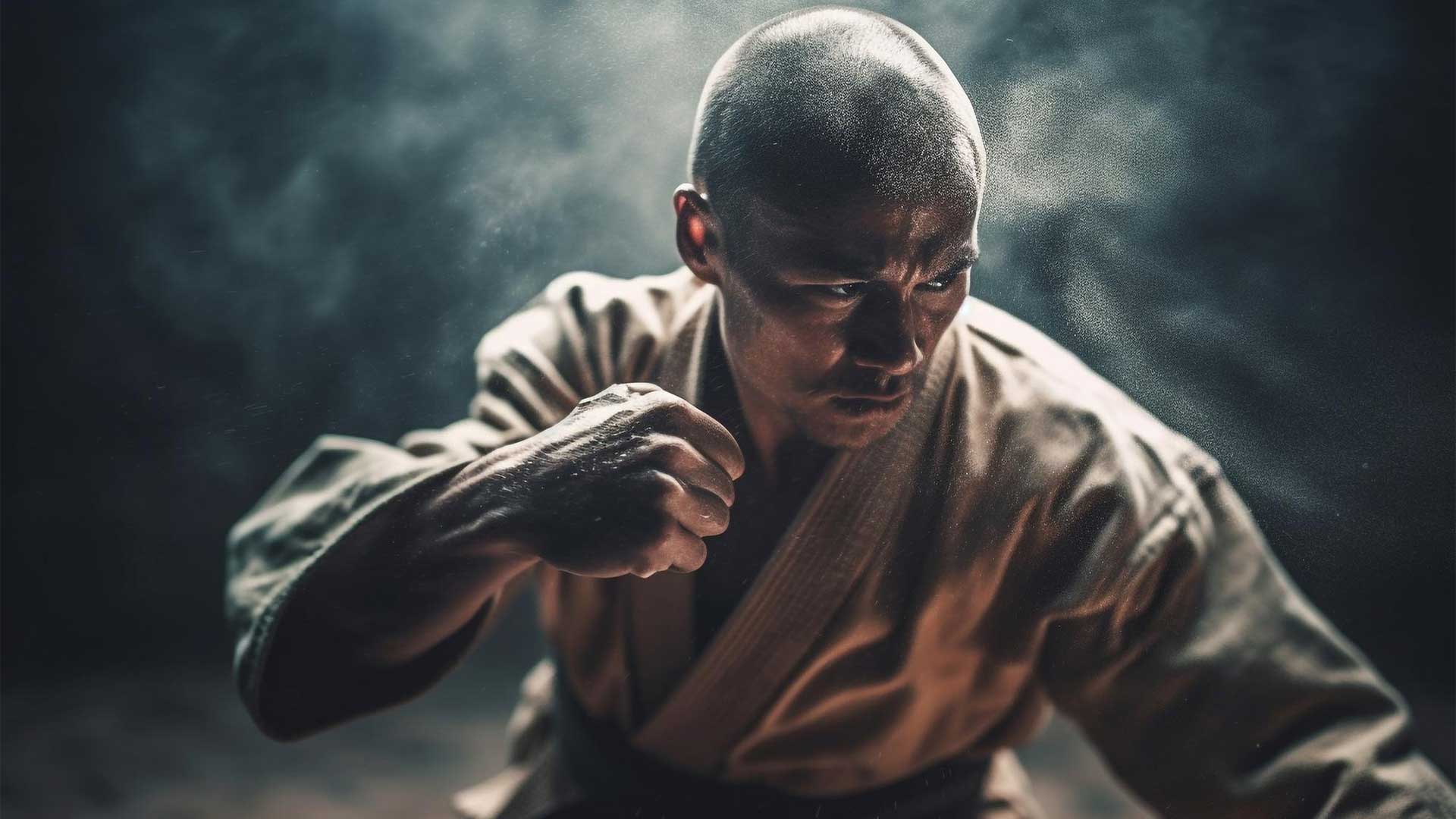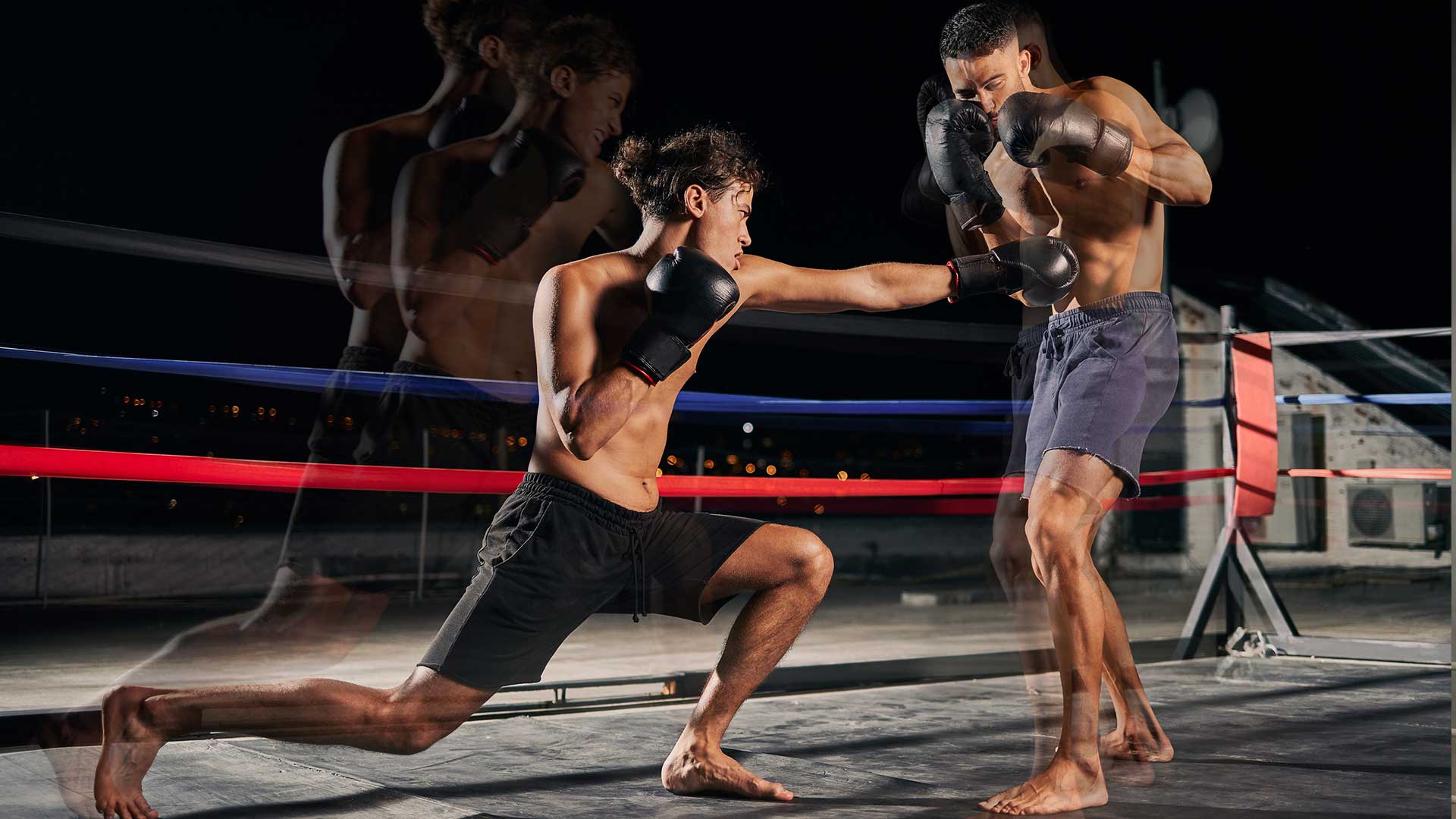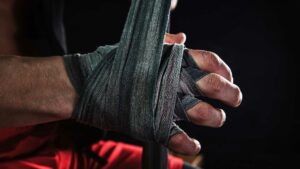Muay Thai, often revered as the art of eight limbs, is not just a test of physical prowess but also a battle of wits. Among its arsenal, the teep stands out not merely as a defensive maneuver but as a cunning tool to mislead and dominate your opponent. Here, we delve into the subtle art of deception using the teep, transforming it from a straightforward push kick into a chess piece in the strategic game of Muay Thai. For fitness enthusiasts and newcomers alike, understanding how to mislead the opponent in Muay Thai with these techniques can be both a thrilling and highly effective element of your training.
Learn how to mislead opponents in Muay Thai
- Use the Teep to create distance.
- Employ the Fake Teep to confuse opponents.
- Combine Fake Teep with Rear Kick, Knee, or Elbow for effective deception.
1. The Teep
At its core, the teep is a versatile technique used for maintaining distance, controlling the pace of the fight, and setting up attacks. However, its simplicity is its greatest deception. A well-executed teep can not only halt an opponent’s advance but also create a moment of uncertainty, opening them up for further exploitation. The key to mastering the teep lies in timing, precision, and the ability to read your opponent’s movements. By varying the strength and target of your teep, you can keep your opponent guessing, making it a formidable tool in your Muay Thai arsenal.
Insider Tip: “The power of the teep isn’t just in the push; it’s in the threat of what comes next.”
2. The Fake Teep
The fake teep is where the mind games begin. By simulating the motion of a teep without fully extending the kick, you can trigger a defensive reaction from your opponent, exposing them to counter-attacks. This feint can be particularly effective when used sporadically, ensuring that your opponent remains wary of both the real and the fake teep. Incorporating body movement, such as a slight forward lean or shoulder twitch, can enhance the believability of your fake, further unsettling your opponent.
Insider Tip: “Sell the fake with your whole body, not just the leg.”
3. The Fake Teep to the Rear Kick
Building on the foundation of the fake teep, the transition to a rear kick is a natural progression that can catch opponents off-guard. After drawing your opponent’s attention and defense to the front with the fake teep, swiftly switch your weight and deliver a powerful rear kick to the body or legs. The beauty of this combination lies in its ability to exploit the momentary vulnerability created by the fake, delivering a strike when your opponent is least prepared to defend against it.
Insider Tip: “The switch should be fluid, making the transition from fake to kick seamless.”
Real-Life Example: Using the Fake Teep to the Rear Knee
One evening, during a sparring session at my Muay Thai gym, I found myself facing off against a skilled opponent, Sarah. As we circled each other, I noticed Sarah was anticipating my next move. Remembering a technique I had recently learned, I decided to try a fake teep to the rear knee.
I faked a teep with my lead leg, causing Sarah to drop her guard slightly in anticipation of the push kick. Seizing the opportunity, I quickly pivoted and launched a powerful rear knee strike towards her midsection. The element of surprise caught Sarah off guard, and my knee strike landed cleanly, scoring me a point in the sparring match.
This real-life example demonstrates the effectiveness of using deceptive techniques like the fake teep to the rear knee in Muay Thai. By mastering these tricks, you can keep your opponent guessing and gain the upper hand in the ring.
4. The Fake Teep to the Rear Knee
Similar to the rear kick, the fake teep to rear knee employs the same principles of misdirection but targets a closer range. Ideal for when the opponent is advancing or if you find yourself in closer quarters, this combination leverages the initial fake to create an opening, allowing you to close the distance and land a devastating knee. The rear knee, aimed at the body or head, can be a fight-ending strike if executed with precision and timing, making it a potent addition to your deceptive tactics.
Insider Tip: “Drive the knee with intention, aiming to penetrate through the target, not just hit it.”
5. The Fake Teep to the Rear Elbow
The pinnacle of misdirection and close-range power, the fake teep to rear elbow, is a testament to the sophistication of Muay Thai as a martial art. This technique demands a high level of skill and timing, as it involves closing the distance rapidly and delivering a sharp elbow strike to the head or body. The juxtaposition of the long-range implication of the teep with the intimacy of the elbow strike creates a disorienting effect on the opponent, making this one of the most challenging yet rewarding maneuvers to master.
Insider Tip: “The transition is everything; practice the motion until it becomes second nature.”
In mastering these techniques, it’s essential to remember that the art of deception in Muay Thai extends beyond the physical. It’s a mental game, where confidence, unpredictability, and strategy play as crucial a role as the strength and speed of your strikes. By integrating these deceptive maneuvers into your training, you not only enhance your offensive capabilities but also develop a deeper understanding of the psychological warfare inherent in the sport.
For those eager to delve deeper into the world of Muay Thai, exploring resources such as how to master Muay Thai, and familiarizing yourself with basic moves, training equipment, and strategies for preventing injuries can provide a solid foundation. Remember, the journey to becoming proficient in Muay Thai, or any martial art, is one of continuous learning and practice. Whether you’re intrigued by the physical challenge, the strategic complexity, or the rich cultural heritage of Muay Thai, there’s always more to explore and master.
In conclusion, the teep and its derived techniques represent more than just physical movements; they embody the strategic depth and psychological intricacies of Muay Thai. By mastering how to mislead the opponent with these tactics, you not only gain a physical edge but also immerse yourself in the deeper intellectual and cultural layers of this ancient sport. So, lace up your gloves, step into the ring, and remember: in Muay Thai, every move you make is a message. What will yours say?
Common Questions
Q: Who can benefit from learning how to mislead the opponent in Muay Thai?
A: Fighters looking to gain an advantage and confuse their opponents.
Q: What are some effective strategies to mislead your opponent in Muay Thai?
A: Feinting, changing rhythms, and using fake strikes are all effective tactics.
Q: How can feinting be used to mislead an opponent in Muay Thai?
A: By pretending to throw a strike, you can make your opponent react, allowing you to capitalize on their movements.
Q: What if my opponent sees through my deception in Muay Thai?
A: Be prepared to adapt and have backup plans to counter their reactions.
Q: How can changing rhythms help in misleading your opponent in Muay Thai?
A: By varying your pace and timing, you can keep your opponent guessing and off-balance.
Q: Isn’t it risky to use deception in Muay Thai?
A: When used strategically and with proper technique, misleading your opponent can be a powerful tool in gaining the upper hand.





















